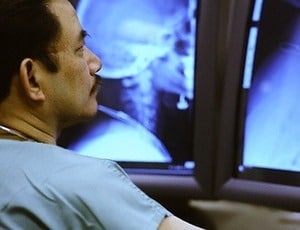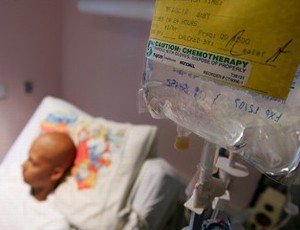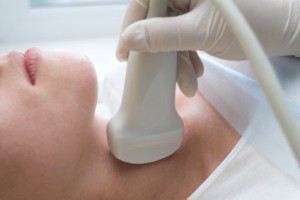Inadvertent arterial placement of central venous catheters

Inadvertent arterial placement of central venous catheters carries serious sequelae, including pseudoaneurysm development and stroke” Dornbos et al (2019). Abstract: Inadvertent arterial placement of central venous catheters carries serious sequelae, including pseudoaneurysm development and stroke. Although numerous strategies for therapeutic repair after arterial injury have been employed, no treatment provides a definitive standard of care. […]
Double-lumen catheter for hemodialysis dislocated into the mediastinum

The insertion of a catheter into the mediastinum can occur in any patient as a complication” Kusumoto et al (2019). Abstract: The insertion of a catheter into the mediastinum can occur in any patient as a complication. We must check for blood regurgitation not only in the blood removal line but also in the blood […]
Intermittent vs. continuous vancomycin infusion for gram-positive infections

The clinical use of intermittent infusion of vancomycin (IIV) and continuous infusion of vancomycin (CIV) is controversial. The aim of this study was to assess the effectiveness and safety of IIV and CIV by using a meta-analysis for cohort studies and randomized controlled trials” Chu et al (2019). Abstract: OBJECTIVE: The clinical use of intermittent […]
Economic burden associated with peripheral IV catheter-related complications

This study aimed to analyze the clinical and economic impact of peripheral intravenous-related complications on hospitalized patients” Lim et al (2019). Abstract: The burden of complications associated with peripheral intravenous use is underevaluated, in part, due to the broad use, inconsistent coding, and lack of mandatory reporting of these devices. This study aimed to analyze […]
Impact of a simple hygiene insertion bundle on CLABSI rates

The primary aim of this study was to investigate the CRI/CRBSI incidence and the association between potential risk factors, including the introduction of a simple hygiene insertion bundle and CRIs at a large university hospital in Sweden” Thorarinsdottir et al (2019). Abstract: BACKGROUND: Catheter-related infections (CRIs) and catheter-related bloodstream infections (CRBSIs) are among the most […]
Fibroblastic sheath mimicking a central venous catheter fragment

When calcified, fibroblastic (formerly known as “fibrin”) sheaths may be easily mistaken for retained catheter fragments. We describe one such case and how imaging was used to recognize the sheath and avoid unnecessary interventions” Baciarello et al (2019). Abstract: INTRODUCTION: Fibroblastic sheath formation is a well-known complication of long-term central venous catheters. When calcified, fibroblastic […]
Virtual reality headset to decrease venipuncture pain

This experimental study was conducted to determine the effect of using a virtual reality headset on decreasing the pain felt during a venipuncture procedure in children” Aydın et al (2019). Abstract: PURPOSE: This experimental study was conducted to determine the effect of using a virtual reality headset on decreasing the pain felt during a venipuncture […]
Brachial artery pseudoaneurysm post-venipuncture

Brachial artery pseudoaneurysms (BAPs) are rare but could lead to complications of high morbidity. We report a case of a BAP presenting with hand ischemia and median nerve neuropathy nearly a decade after the inciting iatrogenic trauma” Lee et al (2019). Abstract: Brachial artery pseudoaneurysms (BAPs) are rare but could lead to complications of high […]
Practical approach to the management of CRBSI

This review focuses on updated recommendations for the diagnosis and management of CRBSI in adults” Cantón-Bulnes and Garnacho-Montero (2019). Abstract: Catheter-related bloodstream infections (CRBSI) is a common cause of nosocomial infection associated resulting in substantial morbidity, mortality, increased length of hospital stays and health-care costs. New clinical practice guidelines for the management of adults with […]
Prevalence of needlestick injury among healthcare workers

The aim was to establish the pooled prevalence of needlestick injuries among healthcare workers in Ethiopia” Yazie et al (2019). Abstract: BACKGROUND: Health facilities can provide diagnostic, curative, and prognostic services for the community. While providing services, healthcare workers can be exposed to needlestick injuries that can transmit pathogenic organisms through body fluids. OBJECTIVE: The […]
Monitoring quality of care for peripheral intravenous catheters

Our study highlights the need for PIVC quality surveillance on ward and hospital level and reports the PIVC-miniQ to be a reliable and time efficient tool suitable for frequent point-prevalence audits” Høvik et al (2019). Abstract: BACKGROUND: Peripheral intravenous catheters (PIVCs) account for a mean of 38% of catheter associated bloodstream infections (CABSI) with Staphylococcus […]
Impact of an innovative IV securement dressing

This study’s purpose is to assess the impact of single-use disposable tourniquets and advanced occlusive polyurethane dressings with reinforced cloth borders on peripheral intravenous catheter (PIVC)-related complications and contamination” Parreira et al (2019). Abstract: Reusable tourniquets and conventional securement dressings are considered risk factors for the occurrence of reported complications and catheter-related bloodstream infections. This […]
Ethanol locks for the prevention of catheter-related infection

This study aimed to provide a comprehensive summary of randomized controlled trials (RCTs) assessing the efficacy and safety of ethanol locks for preventing CRI in patients with CVC” Zhang et al (2019). Abstract: BACKGROUND: The widespread use of central venous catheters (CVCs) has exposed patients to a high risk of catheter-related infection (CRI), which is […]
An initiative to reduce community acquired CLABSI

To reduce the incidence of CA-CLABSIs requires a concentrated effort between hospitals and home health agencies” Patton et al (2019). Abstract: BACKGROUND: Community acquired blood stream infections (CA-CLABSI) are a major source of morbidity and mortality for pediatric patients. Many organizations discharge pediatric patients to home health agencies to care for central lines. To reduce […]
Innovative cyanoacrylate device to improve IV catheter securement

The purpose of this study is to demonstrate the strength of a novel catheter securement cyanoacrylate for securing peripheral venous catheters, central venous catheters, peripherally inserted central catheters, and all other intravascular catheter types” Guido et al (2019). Abstract: INTRODUCTION: Over one billion intravascular devices are used worldwide, annually. Due to the associated complications with […]
Central venous blood gas analysis an alternative to arterial analysis

This study was aimed to investigate the correlation of pH, PCO2, bicarbonate, sodium, potassium, and chloride (electrolytes) between ABG and central VBG in ICU patients” Bijapur et al (2019). Abstract: AIMS: Arterial blood gas (ABG) analysis is a frequently ordered test in intensive care unit (ICU) and can analyze electrolyte in addition to pH and […]
Overuse of intravenous infusions in China reviewed

This article reviews the current status of the overuse of intravenous (IV) infusions in China and implications to patient safety, and analyzes factors associated with the overuse” Zeng et al (2019). Abstract: This article reviews the current status of the overuse of intravenous (IV) infusions in China and implications to patient safety, and analyzes factors […]
Therapeutic drug monitoring-guided continuous infusion of piperacillin/tazobactam

We assessed the effect of therapeutic drug monitoring-guided (TDM), continuous infusion (CI) and individual dosing of piperacillin/tazobactam (PIP) on PK-target attainment in critically ill patients” Richter et al (2019). Abstract: PURPOSE: Standard dosing and intermittent bolus application (IB) are important risk factors for pharmacokinetic (PK) target non-attainment during empirical treatment with β-lactams in critically ill […]
Maintenance antisepsis in reducing the rate of late-onset central venous catheter-related bloodstream infection

We aimed to analyze the effectiveness of maintenance antisepsis at the CVC insertion site in reducing the CRBSI risk through comparing the use of 0.05% chlorhexidine to 1% chlorhexidine” Kikuchi et al (2019). Abstract: BACKGROUND: Bundled measures have been recommended to reduce the risk of central venous catheter (CVC)-related bloodstream infection. However, the importance of […]
Potential efficacy of garlic IV lock therapy in combating biofilm formation

Is to estimate the potential use of fresh garlic extract (FGE) as a lock agent against multi-drug resistant (MDR) bacteria” Farrag et al (2019). Abstract: BACKGROUND: Life-threatening central venous catheter-related infections are primarily initiated by biofilm formation on the catheter surface. Antibiotic lock therapy is recommended for eradicating intraluminal biofilm. In the era of antibiotic […]
Case study describes bilateral absence of the superior vena cava

Bilateral absence of the superior vena cava (SVC) is an uncommon congenital vascular anomaly, mainly asymptomatic, usually undetected, and often associated with other cardiac anomalies” Derbel et al (2019). Abstract: Bilateral absence of the superior vena cava (SVC) is an uncommon congenital vascular anomaly, mainly asymptomatic, usually undetected, and often associated with other cardiac anomalies. […]
Evidence-based reduction of neonatal CLABSI rates

The objective was to decrease CLABSIs using evidence-based measures. The retrospective review compared CLABSI incidence during and after changes in catheter care” Dumpa et al (2019). Abstract: Advances in neonatology led to survival of micro-preemies, who need central lines. Central line-associated bloodstream infection (CLABSI) causes prolonged hospitalization, morbidities, and mortality. Health care team education decreases […]
Risk factors for totally implantable vascular access device complications

The objective of the present study was to investigate the incidence of long-term complications and identify risk factors associated with TIVAD placement in patients with gastric cancer” Okazaki et al (2019). Abstract: Totally implantable vascular access devices (TIVADs) are often used to administer chemotherapy by prolonged intravenous infusion. The objective of the present study was […]
Prevention of dilator injuries during central venous catheter placement

Misuse of vascular dilators during the placement of central venous catheters has been infrequently reported and can lead to devastating intrathoracic hemorrhage and death” Collier (2019). Abstract: BACKROUND: Misuse of vascular dilators during the placement of central venous catheters has been infrequently reported and can lead to devastating intrathoracic hemorrhage and death. These injuries should […]
Perioperative neutropenia is not an independent risk factor for CLABSI in children

This study aims to investigate the early (≤30 days) and late (>30 days) infectious complications of CVLs placed in pediatric patients with and without neutropenia” Cunningham et al (2019). Abstract: BACKGROUND: The infectious risk of central venous line (CVL) placement in children with neutropenia (absolute neutrophil count [ANC] 30 days) infectious complications of CVLs placed in pediatric patients […]
Infective risk factors for critically ill burn patients

We conducted a systematic review and meta-analysis to identify potentially modifiable risk factors for multidrug-resistant Gram-negative colonization or infection in critically ill burn patients” Vickers et al (2019). Abstract: BACKGROUND: We conducted a systematic review and meta-analysis to identify potentially modifiable risk factors for multidrug-resistant Gram-negative colonization or infection in critically ill burn patients. METHODS: […]
Clinical impact of delayed central venous catheter removal

We evaluated the impact of delayed CVC removal on mortality according to the severity of comorbidities in patients with candidaemia” Lee et al (2019). Abstract: Background: The effects of early central venous catheter (CVC) removal on the clinical outcomes of patients with candidaemia remain controversial. We evaluated the impact of delayed CVC removal on mortality […]
Association of race and ethnicity with vascular access outcomes

The objective of this study is to examine the association of race with outcomes of hemodialysis access and selection of arteriovenous fistula versus arteriovenous graft” Copeland et al (2019). Abstract: BACKGROUND: Black end-stage renal disease (ESRD) patients represent 30.5% of the prevalent ESRD population in the United States, despite only accounting for 18% of the […]
Comparing PICC infectious complications with other types of central catheters

There is insufficient evidence to show a difference in CRBSI rates between PICCs and tunneled catheters. On the other hand, PICCs showed lower CRBSI rates than ports” Mateo-Lobo et al (2019). Abstract: BACKGROUND: Home parenteral nutrition (HPN) has become a common therapy. There is still controversy regarding the possibility that peripherally inserted central catheters (PICCs) […]
Survey suggests rise in the incidence of sharp injuries

There is an urgent need for aggressive SI-reduction strategies, including leadership support, safety-engineered devices (SED) training/education, and adoption of safer, less user-dependent SED” Grimmond and Good (2019). Abstract: Background: The annual Exposure Survey of Trends in Occupational Practice (EXPO-S.T.O.P.), conducted by the Association of Occupational Health Professionals in Healthcare, provides a U.S. national overview of […]

